The Greek

The model for modern civilization began more than 2,800 years ago on the shores of the Mediterranean Sea. The people called theselves the Hellenes, known by many as the Ancient Greeks. Though their civilization began on the peninsula that is now Greece, the Hellenes spread throughout the Mediterranean, establishing colonies as far west as Spain, and as far east as the coast of Turkey. The Ancient Greeks developed highly sophisticated forms of writing, theater, agriculture, politics, architecture, trade, and warfare.
Powerful city-states ruled the land. Some were governed by the world’s first democracies (such as Athens), and others by hereditary monarchies. They shared a common religion; worshiping a pantheon of gods that included Zeus, Poseidon, Hera, and Athena. Every four years, under a truce of peace, the strongest and fastest gathered on the slopes of Mount Olympus for the classical Olympic games.
Ancient Greek warriors, called Hoplites, trained to fight with a long spear and a round shield. Interestingly, the Hoplites were all volunteers from what we would consider the “middle class.” Each paid for his own arms and armor.
Through Homer and the Iliad, we know of the famous Trojan War between the Hellenes, from the area now known as Greece and the Hellenes who lived in Troy, a city in what is now modern Turkey.
The Norse

From modern day Scandinavia sailed the people known as the Northmen. The Norse navigated the north Atlantic establishing trade routes, settlements, and communication with much of the known world. Besides being accomplished Vikings (raiders) the Northmen colonized Greenland, Iceland and “Vinland”, and established settlements as far west as present day Canada.
The Norse longships were well suited to the open sea and for traveling inland waterways such as the coastal rivers through most of northern Europe. In addition to maritime skills, the Norse were renowned for their use of iron, their versatil language (elements of which are used today in modern English) and their storytelling tradition.
Contrary to popular conception, the view of the Northmen as unorganized raiders neglects the organization of their societies, the strength of their leadership, and their willingness to assimilate.
The Japanese
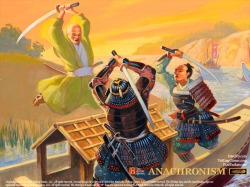
About 900 years ago, Japan was one of the most advanced nations on earth. It enjoyed a diverse culture with deep roots in mainland Asia. Power in Japan was held by an Emperor, but real power was held by powerful nobles and warlords. This was the time of the samurai, a caste of warriors who followed the code of bushido - a martial philosophy of honor and duty. So absolute was adherence to this code that a liege lord could order a subordinate to commit “seppuku,” ritual suicide, and be certain the order would be carried out.
The Sengoku period, which began about 550 years ago and lasted for nearly 150 years, is known as the time of “warring states.” 400 years ago, Japan unified under a strong warlord known as a Shogun and the time of strife and chaos drew to a close… at least for a while. Many of our modern impressions of feudal Japan are based on this period of time.
The feudal Japanese are remembered for their elaborate politics, beautiful art and poetry, the samurai, and many examples of arms and armor that exist to this day as works of art.
The Romans
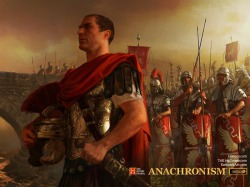
Rome began as a modest city-state on the west coast of the Italian peninsula. Through time, it developed into a Republic and, through conquest, forged itself into the Roman Empire. At one time Rome controlled most of southern Europe, North Africa and parts of Asia Minor. Until the rise of the modern superpowers, the Roman Empire remained the largest and most powerful state in the history of the world.
Rome emerged as a monarchy nearly 2,800 years ago. About 250 years after its founding, a revolution deposed the monarchy and gave birth to the Roman Republic.
For more than 400 years the Republic endured until the rise of Julius Caesar and his nephew Augustus who transformed Rome into an Empire.
For nearly 500 years Rome ruled a majority of the known world. At the height of its power and glory, the capital city of Rome housed more than a million people. After the fall of Rome, it took the world over 1300 years to build a city with a larger population.
The Romans built roads and aqueducts across Europe, some of which are still in use today. They were known for their art, sculpture, architecture, legal system and the bloody battles of the gladiatorial arenas. The Pax Romana, the “Roman Peace,” endured for nearly 200 years after the founding of the Empire and is still remembered as a “golden age”.
The Egyptians
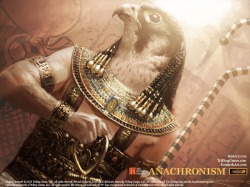
The ancient kingdom of Egypt lay along the fertile valley of the Nile River in northeastern Africa. For nearly three millennia, the Egyptian pharaohs ruled one of the ancient world's richest and most powerful nations.
Ancient Egyptians are credited with devising the earliest known alphabet (hieroglyphics), the decimal system and complex mathematical formulae. They created papyrus, considered the world's first truly convenient writing material, and from which derives the word 'paper'. They sculpted in stone and decorated the walls of their palaces and tombs with illustrated stories.
The pyramids of Egypt were built as monuments to house the tombs of the pharaohs. Egyptians believed strongly in life after death and made elaborate preparations to ensure that the spirit of the dead would be comfortable. Death was seen as merely the beginning of a journey to the other world.
The religious beliefs of the ancient Egyptians were the dominating influence in the development of their culture, although a unified theological system never existed among them. Egyptian faith was based on a collection of ancient myths, nature worship, and innumerable deities.
The Britons
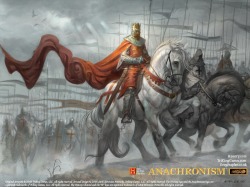
The emergence of Britain as a nation did not begin as a result of a quick, decisive victory over the indigenous people, but as the outcome of hundreds of years of settlement and growth. The heritage of the Britons is based on a complex mosaic of cultures, ideologies and economies.
Following the final withdrawal of the Roman legions from the provinces of Britannia, the peoples of Britain were left to preserve their own order and deal with invaders, from the Saxons to the Norse, who began their onslaughts once more.
In the eighth and ninth centuries the concept of a single ruler unifying different tribes developed, creating centralized systems of government.
Long practiced in the art of warfare, the Britons were responsible for some of the finest scientific and artistic achievements in man's history. In addition to their beautifully wrought and highly decorated shields, daggers, spears, helmets and sword, they also produced jewelry of exquisite form and decoration.
Through resourcefulness, brilliance and outright brutality where required, the Britons grew to become one of the pre-eminent military and economic powers in the world, from medieval times, through the age of colonization and right into the 20 th century.
The Mongols
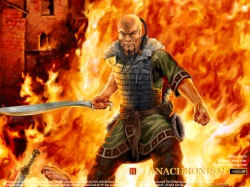
The best known of the Central Asian nomads, the Mongols arose from a group of closely related tribes dwelling in the semi-arid regions of the Asian steppes, north of the Gobi Desert. By the end of the thirteenth century the Mongol Empire stretched from the Pacific Ocean to the plains of Eastern Europe, and included most of Asia, creating the largest contiguous land empire in history. The rapid expansion of the Mongol Empire was possible as a result of military skill, brilliant political and economic organization, and unparalleled discipline.
Speed and surprise were the chief weapons of the Mongols. No army equaled theirs in mobility, horsemanship or archery. One of the most commonly used tactics of Mongol warfare was the feinted retreat, often practiced by the elite Mangudai cavalry. In the heat of battle, a Mongol unit or even an entire section of the whole army would suddenly appear to break and retreat, luring the opposition forward through the false belief that the Mongol army was fleeing the field. Only when the enemy forces had lost cohesion would the Mongols spring the trap, flanking the broken formations of their enemy, showering them with arrows and using the ensuing chaos to utterly rout their opponents.
The Mongols were possessed of an insatiable curiosity and a penchant for knowledge. They built roads that spanned the vastness of their entire empire, carrying both merchandise and messages to all corners of their demesne. Their carvings of animal forms showed skill and accuracy, and were mainly made from horn, bone, and hard wood.
The Chinese

China is one of the world's oldest continuous major civilizations, with written records dating back about 3,500 years, and with 5,000 years being commonly used by Chinese as the age of their culture. Some dispute exists however, as to whether China really existed until the Qin emperor united the surrounding kingdoms into a coherent entity.
Successive dynasties developed systems of bureaucratic control, which gave the agrarian-based Chinese an advantage over neighboring nomadic and mountain dwelling cultures.
The development of a state ideology based on Confucianism and the forced imposition of a common system of writing by the Qin emperor both created and strengthened a "Chinese" civilization.
China alternated between times of political union and dissension, and was periodically invaded by other cultures. One strategy China used to fend off invading barbarians was the building of large-scale fortifications such as the Great Wall. The invention of gunpowder (originally used for fireworks), and subsequently firearms, added to this defensive strength.
China boasts a history rich in artistic, philosophical, and political advancement. It was during the period of Imperial China that calligraphy and painting became a highly appreciated art in court circles, with a great deal of work done on silk until after the invention of paper. Porcelain was introduced and advances in the sciences of medicine, astronomy, and cartography were made
The Native Americans
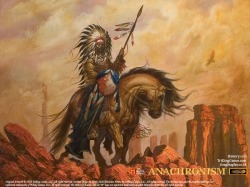
The term Native American encompasses a large number of distinct tribes indigenous to the Americas prior to European colonization.
One of the earliest inhabitants of the plains and hills of South Dakota were the members of the Great Sioux Nation. The Lakota make up one of the three groups of Sioux, occupying lands in both North and South Dakota.
The Northern Great Plains was a vast sea of grass broken up here and there by mountainous terrain and forested river valleys. On the plains, the Lakota survived by hunting buffalo and following the migrating herds from place to place.
They used every part of the buffalo, hides, bones, and internal organs, wasting nothing. Many tribes attributed god-like status to the coming of the buffalo each year, and great ceremonies were held to mark the start of the hunt.
Going on the warpath was a rite of passage for any male warrior. An underlying principle of the Native American people, through it men gained prestige and honor for their family. One of the feats of martial prowess that is most unique to the Native Americans was 'counting coup'. If a young warrior could touch an enemy in the heat of battle without the enemy being aware of the fact, a young brave earned enormous respect and honor.
To this day, most tribes have sacred objects that are unique to their history and as essential to their collective identity as their language. A deeply spiritual people, they commune with the spirit world through music and dance.
The French
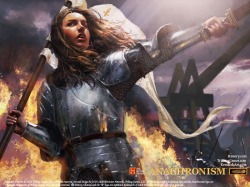
In the first century BC the ancient territory of Gaul, now known as France, was primarily under the control of the Roman Empire - although not without fierce resistance. After the fall of Rome in the 5th century, France was dominated by the Frankish kingdom, which controlled large territories in Germany, the Low Countries and France.
In the eighth century, the leader of the Carolingian dynasty initiated the expansion of the Frankish kingdom , and fought off Islamic attacks from Spain. Two key victories, at the Battle of Toulouse and the Battle of Tours, allowed the Franks to halt the Muslim advance into Europe.
Charlemagne continued this expansion and conquered most of Germany and Italy to reunite a large amount of the former Roman Empire.
Towards the end of the tenth century, France consisted of numerous feudal Lordships. Uniting these disparate and bickering fiefs into one cohesive nation was a formidable task, and led to a constant struggle between those who wore the crown of France and the lords of each small kingdom.
The peak of French military prowess coincided with the rise of armored knights in the Middle Ages. Iron armor, which in France had swiftly replaced other materials such as leather and bronze, made her knights more than a match for the best troops that neighboring countries could muster.
The Scots

Located on the coastal fringes of northwestern Europe, Scotland's dramatic past has been long marked by wars, both internecine and of independence. Its written history largely begins with the coming of the Roman Empire to Britain. Roman armies invaded Scotland several times, sometimes defeating the northern tribes but never incorporating them into their empire.
After the Romans' departure, four kingdoms emerged. The Picts, famous for their carved symbol stones, covered northern Scotland, the Britons to the south, the Dalriadic Scots, the Gaelic-speaking people from Ireland who settled on the western seaboard, and the Angles, Germanic invaders who held the southeast.
Following centuries of warfare between these groups, the first unified kingdom of Scotland was formed of the Picts and Scots. At first this new kingdom contained only the area of Scotland in the north, southwest Scotland remaining under the control of the Britons. However, the gradual incorporation of the Britons' kingdom led to a time of great social, political and religious revolution. At no time did Scotland remain far from the thoughts of England's rulers. This would engender the central thread of Scottish history for the next thousand years.
England invaded, moving to establish full control over Scotland. This led to the Wars of Scottish Independence, a series of military campaigns fought between Scotland and England, when the Scottish people rose up against English dominion. The Scots ultimately regained and reinforced their independence from England during the first part of the 14th century. These bitter struggles have left their mark on the nation, and have contributed to the fierce pride with which the Scots view themselves and their country.
The Germanic Tribes
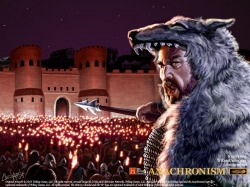
By the late second century BC, the lands in Eastern and Central Europe that had been inhabited by the Celts were invaded by migrating Germanic tribes. These tall, fair-haired warriors were seen as a barbarian threat by Romans, culminating in military conflict with their armies. As Rome advanced her borders to the Rhine and Danube Rivers, the Germans living to the west and south were quickly subdued and incorporated into the Roman Empire. However, in 9 AD, an alliance of Germanic tribes led by Arminius ambushed and wiped out three Roman Legions led by Publius Quinctilius Varus , establishing Germanic territory as far as the Rhine and the Danube and declaring it as being very much outside the Roman Empire.
As the tribes came into increasing contact with Rome, they began to adopt much of her material technology and culture, substantially increasing their efficiency as an agricultural society. In addition, they developed their own system of runic writing during the third century.
The Germanic idea of warfare was quite different from the pitched battles fought by Rome and Greece; instead the Germans focused on small or large raids. The purpose of these was generally not to gain territory, but rather to capture resources and secure prestige. These raids were conducted by troops in groups ranging from ten to over a thousand.
Upon the decline of imperial power, Germanic tribes from the east took over the vast lands once ruled by Rome. While the westernmost Germanic tribes had achieved a settled agricultural life, the others (including the Goths and Vandals) were largely nomadic. Their migrations eventually resulted in the conquest of the western Empire.
The Irish

Isolated on the western fringes of Europe, the green and misty landscapes of Ireland have played host to a history rich in culture and tribulation. Though little is known of the island's earliest inhabitants, to whom the Celts referred only as the Fir Bolg (People of the Belly), the spread of Celtic cultural traits over the next millennium replaced the prior language and traditions of Ireland.
The religion of the Celts involved the worship of natural objects such as trees and rivers. Druidic practice was deeply traditional, and the priests fulfilled many roles including keepers of the laws, stories, and histories.
The kingdoms of ancient Ireland existed in a state of near constant strife but, despite all this (and, in no small measure, because of it), a rich culture flourished. By the 4th century AD, the druidic tradition had collapsed under the proliferation of the Christian faith. Study of Latin and Christian theology flourished; the arts of manuscript illumination, metalworking, and sculpture prospered, bringing about such treasures as the Book of Kells.
While continental Europe descended into darkness and chaos, the fruits of centuries of learning remained, guarded and untouched, on a small island in the Atlantic Ocean.
It did not last. Two hundred years of intermittent warfare began with Viking assaults in the 9th century AD. Despite the damage caused by their attacks, these raiders founded many coastal towns, including Dublin, integrating into Irish culture. As has been said of many of Ireland's invaders, "They became more Irish than the Irish themselves."
Conflict was an ever-present force in Irish history. Even during a period in which Irish kingdoms did not suffer from foreign invasion, inter-dynastic warfare continued to drain energies and resources. English invasions in the 12th century set off more than seven centuries of Anglo-Irish struggle marked by fierce rebellions and harsh repressions.
The Russians

The ancestors of the Russians were tribes of Eastern Slavs, who inhabited the lands between the Carpathian Mountains and the Don River. Russians, or Ruses, were one of the smaller Slavic tribes but, with time, became the dominant power. Kievan Rus, the first East Slavic state, adopted the religion and culture of the Byzantines, introducing a Slavic variant of Eastern Orthodox Christianity.
In the 13th century, Russia came under the control of the Mongols, who conquered most of the Russian principalities. Under Mongol occupation, Russian military tactics were revised and the expansion of trade routes became a priority. While still under the domain of the Mongols, the grand princes of Muscovy began to assert their influence, ultimately gaining full sovereignty. It was under the rule of the first Tsar, Ivan the Terrible, that the Russian Empire first came into focus.
Following Ivan's death, there arose a period of continuous social chaos and upheaval, known as the "Time of Troubles". During this period, various princes and boyars fought to gain power, while war and famine spread throughout Russia. Order was finally restored upon ascension of a nationally elected Tsar.
Muscovite influence over the burgeoning nation continued under the Romanov dynasty. By the late 17th century, Russia had become the largest state in the world, spanning the Eurasian landmass from the Baltic Sea to the Pacific Ocean. Peter the Great was instrumental in bringing his country into the European state system. This effort was further augmented by Catherine the Great, giving rise to Russia as a major European power.
The Maori
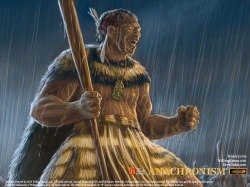
The ancestors of the Maori are thought to have arrived in New Zealand more than a thousand years ago. They used large, ocean-faring canoes called waka to travel across the seas from their homeland, the mythical Hawaiki. The Polynesian navigator Kupe is said to have discovered New Zealand, naming the islands Aotearoa, meaning 'Land of the Long White Cloud'.
The first settlers lived in small dwellings, nestled in sheltered coastal locations, and hunted the abundant bird and marine life. The Maori were also good farmers, and introduced vegetables from Polynesia, including the kumara (sweet potato). These early settlements gradually evolved into fortified villages, known as pa, where trenches and palisades protected villagers from the unwelcome attention of other tribes.
Stories and legends were handed down orally, and through weavings and carvings. Ta Moko (traditional Maori tattooing, often on the face) was worn as a symbol of one's identity and origin.
Before going into battle a haka was performed, invoking the god of war, and warning the enemy of the fate awaiting him. The most well known haka, Ka Mate, was composed by Te Rauparaha, and tells the story of the chief's escape from pursing members of opposing tribes and the exhilaration of his survival. The Maori were fierce warriors and excelled at the art of ambush.
Late in the 18th century, European missionaries and whalers settled New Zealand. The arrival of Europeans and firearms led to the Musket Wars, inter-tribal battles between various groups of Maori, inflicting heavy casualties upon each other and neighboring tribes. Tensions between the European settlers and the indigenous Maori population also led to the Maori Wars, which were among the bloodiest of the colonial wars fought by the British Empire. The process of colonization was formalized by the signing of the Treaty of Waitangi in 1840 between the British government and many of the Maori chiefs.
The Persians
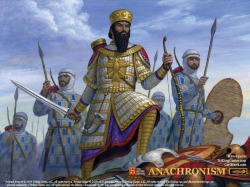
For more than three thousand years, Persia was a melting pot of civilizations. Successive invasions by the Greeks, Arabs, Mongols, and Turks left their mark, and influenced the nation's culture to a notable degree. Deriving from Persis, the ancient Greek name for Iran, the ancient empire of Persia emerged in 6th century BC under the Achaemenid dynasty.
The Persians achieved unity under the rule of Cyrus the Great, but it was Darius who campaigned tirelessly to broaden the empire, pushing its borders to the widest extent. Trade was one of the realm's main sources of revenue, and there was an extensive infrastructure of trade routes connecting far reaches of the empire. Zoroastrianism became the primary religion during the Achaemenid period, reinvigorating interest in the old Aryan gods.
The Achaemenid Persians ruled an empire that comprised Iran, Mesopotamia, Syria, Egypt and parts of Asia Minor and India. The capital, Persepolis, was burned when it fell under the attack of Alexander the Great in 331 BC. Alexander's conquest replaced the Achaemenids with the Seleucids, who were overthrown by the Parthaian and Sassanid dynasties.
The Sassanids brought a revival of old traditions, including Zoroastrianism, which became the state religion. The Arab conquest led to the collapse of the Sassanid Empire, the decline of the Zoroastrian religion, and initiated the flourishing of Islamic culture in Iran.
The Spanish
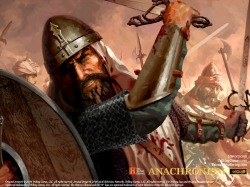
The face of the Iberian Peninsula was shaped by waves of invading cultures coalescing into present day Spain, Portugal, Andorra, and Gibraltar. After the fall of the Western Roman Empire in the fifth century AD, Iberia came under the rule of the Visigoths until invading Arabs drove them north. The Muslims conquered the country swiftly after the defeat of the last Visigoth king, Roderic - with the exception of a small segment to the north. Their presence lasted nearly eight centuries and the Moorish cities flourished as hubs of Arabic culture, trade, and learning.
During the Middle Ages, the forces in the north grew into powerful Christian kingdoms and a revived moment for the Christian unification of Spain was undertaken. The marriage of Isabella I of Castile and Ferdinand II of Aragon, then the two most powerful kingdoms of Iberia, succeeded in uniting the fractured country and their effort was the turning point in the Reconquista. The resulting Spanish Inquisition expelled or killed thousands of Jews and Moors who would not convert to Christianity.
The war of reconquest ended in 1492 with the fall of Granada, the last Arab stronghold in Spain. That same year ships sailing under the Crown of Castile discovered the New World, and marked the beginning of Spain's "Golden Age".
Charles V, the Holy Roman Emperor, united the Spanish kingdoms under one crown and became the first true king of Spain. The culmination of the Spanish Empire in the 16th and 17th centuries made Spain into a leading European power.
The Saracens
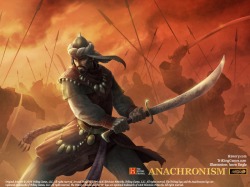
Saracen, from the Greek word sarakenoi, first described the nomadic horsemen who ranged from Syria to Saudi Arabia. It was later used to encompass all Muslims after the rise of Islam, predominantly during the era of the Crusades.
The desert nomads of Arabia embarked on a quest to transform the vast swaths of land around their homes into a holy empire. With their natural ferocity, love of warfare, and religiously inspired, the Arabs soon controlled all of Western Asia and the southern Mediterranean.
The Umayyad and Abbasid dynasties forged the Saracen Empire creating one of the largest land empires in history. This did not last long, and by the 9th century AD the empire had began to disintegrate into smaller kingdoms or caliphates.
Christian states engaged in a series of devastating crusades throughout the region, resulting in the loss of Jerusalem and the surrounding areas. Salah ad-Din led the Saracens to reclaim the Holy Land in the 12th century. His counter-crusade managed not only this recapture, but the unification of the various Arab states into the powerful Ayyubid Dynasty.
Technology flourished and, while Europe tore itself apart during the Dark Ages, the Arab world preserved huge amounts of classical western learning that would otherwise have been lost. Moreover, a deep respect and fascination for learning and culture led to a gret number of notable achievements during the Golden age of Islam.
The Aztecs
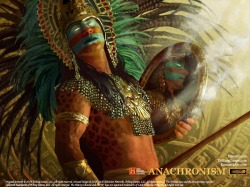
According to legend, the origins of the Aztec empire lay with a mythical island in northern Mexico called Aztlán. The Aztecs, known as the Mexica, believed themselves to be the 'chosen people' of the god Huitzilopochtli. In the 12th century, led by Tenoch, this group of peoples embarked on a period of wandering. They would know their destination when they found an eagle perched on a cactus. This symbol, still the emblem of Mexico today, would mark the spot of their new city and where they would honor the gods. The prophecy was fulfilled, and on the small islands in Lake Texcoco, the city of Tenochtitlán was established.
The Aztecs cultivated crops on floating gardens of piled mud known as chinampas. These artificial islands were used year-round to grow maize, beans, squash, chilies, and flowers. A series of canals threaded throughout the city, making all sections accessible by foot or canoe, while aqueducts provided fresh water.
Under Itzcóatl, the first Aztec emperor, Tenochtitlán's military strength increased. By the 15th century, a series of military campaigns extended their power and influence across Mesoamerica. The Aztec strategies in war were based on the capture of prisoners by individual warriors. When a warrior had captured a worthy number of foes he could then attain the rank of Eagle or Jaguar knight.
The Aztec empire reached the height of its power during the time of Tlacaelel. He restructured the Aztec government and reformed their religion to give higher distinction to the god Huitzilopochtli, something the deity had not previously enjoyed.
Sacrificial appeasement to the gods was widespread in Mesoamerica and South America, though not all offerings involved human victims. However, the Aztecs, through the Spanish conquistadors, have come to be predominantly known for practicing human sacrifice on a large scale. They engaged in "flowery wars", ritual warfare to capture prisoners for ceremonies. Self-sacrifice was also common - those given to Tezcatlipoca were honored as a god on earth for a year prior to their death.
The Pirates
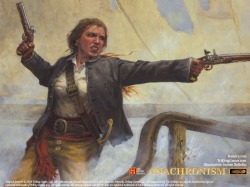
As sailing vessels developed and became a viable means of transporting significant amounts of goods, so too a new breed of thief emerged: the pirate. Although the pirate has been romanticized much in modern literature, the reality of life for most was significantly different. The great majority of pirates had a very poor diet, never amassed any wealth, and achieved little beyond an early grave. Despite, or perhaps because of, their brutal lives, most pirate clans appear to have operated on a quasi-democratic basis. Leaders were elected by the men, but were held personally responsible for the fortunes that befell them and their crew.
Typically, pirate captains were fearsome warriors and instinctive leaders. However, while not in combat, it is apparent that much authority devolved to the clan or ship's quartermaster, who was responsible for the management of available resources. These resources were allocated according to agreements drawn up by the pirates. Often very complicated, these documents could be used as incriminating evidence against individuals named within them.
The era of Caribbean piracy extends from roughly 1560 AD to 1720 AD. Driven by colonial rivalries, sanctioned pirates known as privateers attacked and plundered bullion ships and coastal towns. With thousands drawn to the new world by the promise of wealth beyond imagining, harsh reality drove many to the outlaw life. Between about 1640 and 1680, piracy reached its peak, becoming an enormous problem for all colonial powers in the region. Tortuga, and later Port Royal, became famous pirate bases.
Today, piracy remains a significant problem in certain parts of the world, particularly the Pacific and Indian Oceans. An estimated 15 billion US dollars are lost every year to piracy. The Mediterranean Sea, the center of pirate activity in the classical world, still witnesses some piracy as well.
The Romanians
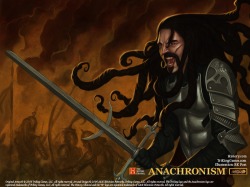
Priding themselves on being the westernmost Romance people, the Romanians have been at the heart of European struggles since Roman times. Having become involved in Roman political machinations through an early Getan king, Burebista, Rome eventually saw fit to conquer the territories that would become the Roman province of Dacia. After the Roman army and administration left Dacia somewhere between 271 and 275, the Goths invaded the country. Eventually integrating with the indigenous population, it was not until the 4th century that another nomadic tribe, the Huns, arrived. Other races mentioned in the cultural histories of Romania are the Avars, the Bulgars (who ruled in Transylvania until 1257), the Cumans, the Gepids, the Pechenegs, and the Uzes. Despite all this, the Romanian peoples maintained a rich and continuous cultural tradition.
It was not until the founding of Wallachia by Basarab I in the 13th century and the founding of Moldavia by Dragos in the 14th century, that Romania began to take on the semblance that was to become so pivotal in the political and ideological struggle against the Ottoman Empire.
In 1475, Stephen the Great won a significant victory against the Ottomans at the Battle of Vaslui. Despite this, due to aggressive neighboring kingdoms to the west, the Romanian kingdoms themselves came under increasing pressure, and gradually came under Ottoman suzerainty. While maintaining internal autonomy, Wallachia and Moldavia became tribute states.
Centuries later, an expanding Russian Empire competed with the Hapsburgs and the Ottomans for control of the Romanian kingdoms. The modern state of Romania was formed in 1859, with the merging of Moldavia and Wallachia. When World War I erupted, Romania, despite previous alliances with Germany and Austria-Hungary (the Central Powers), entered the conflict on the side of the Triple Entente. The aim of this move was to acquire Transylvania, a goal that was ultimately realized when Transylvania was forcibly annexed to Romania in the 1920 Treaty of Trianon.
The Turks

Spanning more than seven centuries, the Ottoman Empire was one of the great world powers in its day. It originated with Turkic migrations from Asia during the 10th century, which led to settlement in Anatolia some time in the 12th century. There, they were governed by the Seljukid State of Anatolia, which was itself a vassal of the Mongol Empire. When the Seljukid State began to collapse towards the very end of the 13th century, Osman I declared independence. Various other groups splintered into a state of civil war, out of which the Ottoman faction emerged victorious.
Instituting a progressive political and expansionist program, the Ottomans set about conquering their neighbors and soon became a force to be reckoned with. They were in almost constant conflict with the Romanian kingdoms of Moldavia, Wallachia and Transylvania, which ultimately became tributary principalities.
Perhaps the most singular Ottoman military achievement was Mehmed II's conquest of Constantinople in 1453. In a stroke, the eastern bulwark of Christianity disappeared, leaving the Ottomans as the single greatest threat to western power at that time. The power of the Ottoman Empire reached its peak, its Golden Age, with the reign of Suleiman I the Magnificent. The Ottoman Empire had become a world power and a world center of learning, art, and thought.
The turning point for the Ottoman Empire came at the Siege of Vienna in 1683. This action turned a number of it allies against it, and so began a 230-year decline, marked by numerous costly wars, institutional reorganizations, and the rise of nationalism. The empire continued on for several centuries more, but came to its final end on November 1st, 1922, when the Grand National Assembly abolished the sultanate. The nation of Turkey was officially declared on October 29th, 1923.
The Frontier Americans
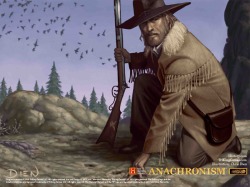
The American Frontiersmen were a diverse group of pioneers, explorers, trappers and guides whose actions helped create America as we know it today. Usually portrayed as lone mountain men, these historic figures were actually as comfortable in bands and expeditions of like-minded men as they were out in the wilderness on their own.
Most of the American Frontiersmen made their living hunting and trapping, working as employees or guides for the many fur companies. Some of these Frontiersmen even founded companies, such as Jim Bridger's founding of the Rocky Mountain Fur Company. Far from being illiterate wilderness wanderers, they engaged not just in fur trading, but in land speculation, trading in slaves and animals, and in some cases, even being elected to government office in lands they helped explore.
As some of the first Americans to see the west, the maps and routes founded by these explorers were instrumental in the westward expansion of the United States and its people.
The first White men to see the geysers of Yellowstone, the Great Salt Lakes of the north, and many other natural wonders, these men brought back to civilization tales that inspired many of the pioneers who moved west. From the Oregon Trail to Spanish Louisiana, the routes paved by these men guided the thousands that followed them.
In stories and movies, these great warriors are often portrayed as hostile to native Indian tribes. It is true that many of them fought with the Indians over hunting rights and land, and some fought as commissioned military for the United States army, but even so, they were often quite friendly with many Native American tribes. Some even became tribe members or married native women. It was also the practice of the time to encourage Native tribes to war against each other and these men served as points of contact for tribes whose goals temporarily overlapped with those of the US.
As with many historic figures, the legends and myths surrounding these great men obscure the historic truth. The stories of their deeds inspired many of those who created America as it exists today, and they stand as a tribute to the power of determination and independent spirit.
The Trojans
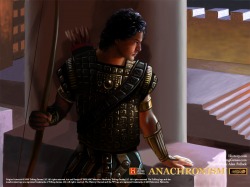
The source of history, myth and legend that shapes the western world to this day, the Trojans rose from being members of a single city (Troy) to being a major force in the medieval world. The city of Troy lies in the land of Asia Minor near modern-day Turkey and this centralized location allowed the Trojans to grow rich from trade, both by land and sea, while remaining protected by their fierce warriors and the impenetrable Walls of Troy.
According to legend, the goddesses Hera, Athena, and Aphrodite quarreled over who was the fairest goddess. Zeus declared that Paris of Troy, considered the handsomest man, should proclaim the winner, and Paris selected Aphrodite. Aphrodite rewarded him by making Helen of Troy, considered the most beautiful woman (and wife of Menelaus, King of Sparta), fall in love with him.
After Paris stole Helen from Menelaus, the Achaean armies of Menelaus and his brother Agamemnon waged the Trojan War against the city of Troy, which lasted more than a decade. The war saw clashes between the greatest fighters of the day, including rivals such as the Achaeans Achilles and Aias (Ajax), and the Trojans Hector and Paris. The story of the Trojan War is rife with intervention by gods, such as Artemis and Aphrodite, and culminated in the trick heard round the world, the famous Trojan Horse.
The true historical roots of the Trojan War are not known for certain, but are thought to be a collection of various stories of sieges and expeditions by the Greeks between about 1300 and 1200 BCE. These conflicts were expanded and embellished in the retelling, including in Homer's legendary epic poems the Iliad and the Odyssey, into the myth that is with us today.
The Tribes of Isreal
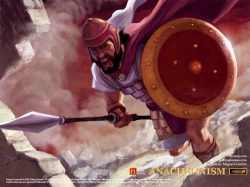
The Tribes of Israel descend from the twelve sons of the Biblical patriarch Jacob who was renamed Israel by God in the book of Genesis, 32:28. His twelve male children were Reuben, Simeon, Levi, Judah, Issachar, Zebulun, Dan, Gad, Naphtali, Asher, Joseph, and Benjamin. Each of these children founded one of the tribes. Most of the text in the Old Testament is devoted to the tales and stories of these tribes and their hardships in following their chosen god. Many of the stories have become part of western mythology and culture.
The most famous of the Tribes of Israel is Judah. King David and Jesus Christ are two of the best known descendants of Judah. After the death of David's son Solomon, the Israelites split into two kingdoms. Judah and Benjamin formed the southern kingdom of Judah with their capital at Jerusalem, while the other ten tribes formed the northern kingdom of Israel with their capital at Samaria.
The Jewish people were plagued by conflict. The northern kingdom of Israel was conquered and taken away by the Assyrians in the eighth century BCE. They effectively disappeared from history and became known as the Lost Tribes of Israel. These lost tribes dispersed throughout the world and have largely been assimilated into other cultures. The southern kingdom of Judah was also conquered and transported away by the Babylonians about two centuries after the northern kingdom was lost. However, after the Babylonians were themselves conquered by the Persians, the Jews were allowed to return to Jerusalem where they were again conquered by the Greeks and Romans. Born in conflict and surrounded by it throughout history, the Tribes of Israel flourished by faith and community. From children's stories to religion and philosophy, the legends and history of the Tribes of Israel have shaped the western world.
The Kingdoms of Africa
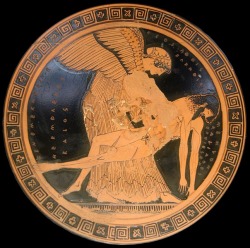
Ever since the beginning of humankind, the natives of Africa have been forced to fight. Wether against the elements or themselves, there was only one policy to war, the strongest survived, the weaker were destroyed.
The natives of Africa were brutal in warfare and even brutular to those captured. They were nononsense. War was not an art to them. It was a way of survival.
Even against the might of powerful Britain and France, they fought with all the vigor that had helped them survive the Sahara Desert. In the end, they were defeated, not by an enemy with more courage, but Technology that no ancient weapons could thwart.
The Carthignians

A power born by the Phenocian Sailors in the early days of human history, the city Carthage soon rose to become a mighty city. It's navy was one of the best in the world, and its' wealth was great. They had so much wealth, they rarely went to war themselves, but bought armies of mercenaries to fight for them. This allowed them to experiment with tactics that all these cultures had brought with them into the fold.
This great wealth they had brought they came into conflict with another power: Rome. Three wars were fought, and the Carthignians showed an ability to be imaginative in how they fought war, even when on the losing end of the spectrum.
In the end, they were unable to buy victory, and lost all. But, their armies made a great stand against Rome, and in the end, dealt Rome terrible losses for its' victory.
Most of the descriptions come directly from the Triking Games website. All of the ones past The Tribes of Iserael were completly made up.
